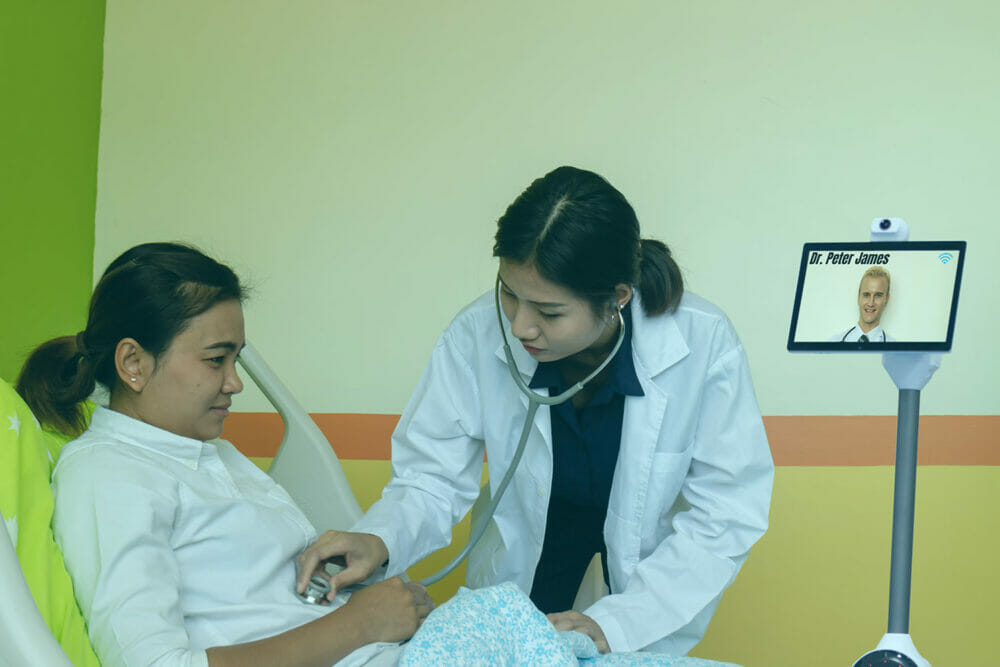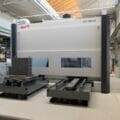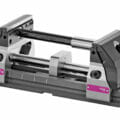On 12th September 2022, health ministers and delegates from the World Health Organization (WHO) Europe’s 53 Member States adopted a digital health action plan to increase the provision of medical technology, including telemedicine robots. However, increased production of (and reliance on) telemedicine robots places increased demand on the batteries that power them. Here, Robert Brown, marketing executive for medical and robot battery manufacturer Accutronics Ltd, explains why engineers should consider batteries early in the design stage.
There has always been a need for healthcare workers and their patients to communicate virtually, even before the robot revolution began in the 1980s. For example, 30 years prior, clinicians at the University of Nebraska were using two-way interactive televisions to transmit neurological examinations to medical students. In the 1970s, NASA also investigated telemedicine options to treat astronauts in space.
However, it wasn’t until 2013 when the first autonomous, human-sized, telepresence robot received the U.S. Food & Drug Administration (FDA) stamp of approval. This device included diagnostic tools like ultrasound machines and was capable of automatically navigating hospitals while avoiding walls or people.
Since then, engineers have improved the performance and capabilities of these robots while making them even more trustworthy. Today’s robots are equipped with advanced cameras and microphones that enable health specialists to video-call hospital patients as if they were at their bedside. Additionally, modern robotics allow surgical operations to be performed remotely, with telemedicine robots acting as the surgeon’s eyes and mouth while surgical robots act as the surgeon’s hands.
Such video-centric robots are also used by health centres to virtually connect patients in different locations for shared/community meetings on topics like mental health. They can also be used in the homes of people with long-term conditions, to allow doctors to give virtual updates to the patient quickly and regularly.
As a result of this high number of uses, there is a competitive and booming market for these robots. As with any form of technology, the pressure is on for new robot designers to make their creation smaller, more manoeuvrable and with an increased level of functionality to competitors. Because every robot manufacturer is striving for uniqueness, they will likely need to integrate unique components, down to the battery. Therefore, it is important that the battery manufacturer is involved in the robot’s development from the initial design stage. For example, if the robot designer’s aim is to make their robot smaller than competitors, the size of the battery pack may need to be customised to fit in the available space, as the pack is often embedded. The number of cells and their configuration within the pack may also need to be adjusted to meet the robot’s runtime requirements.
These are only a couple of examples and there are many more, including how the robot will be transported to where it is needed. Nowadays, many telemedicine robots are on wheels and autonomously navigate from location to location. During transportation, robots may pass over uneven floors or knock against objects, which could shock or vibrate them, so the batteries may also need to be shock and vibration tested. This can be arranged by the battery manufacturer but also takes time. To ensure that sufficient testing is carried out, most original equipment manufacturers (OEMs) will require batteries to be certified to safety standards such as IEC 62133-2. These standards are designed to ensure that batteries are protected against real-world scenarios, including shock, vibration, short-circuiting, over-charging and more.
Carving time in the product launch plan to conduct these tests will ensure the robot designer gets a battery that meets their needs. However, the initial battery is not the end of the road because, just as with robots, new models will have to be released in the years that follow to take advantage of changes in technology such as cell technology and battery management. Working with a battery manufacturer can ensure that the portable power solution is updated to accommodate for these improvements.
Accutronics has over 20 years of experience in the design and manufacture of batteries for medical and robotics applications. The company’s custom battery and charger design service is designed to meet the emerging needs of feature-laden devices in professional markets.
Read more about our custom and pre-engineered battery solutions for medical devices at http://bit.ly/3Ki2F5A and robotics at http://bit.ly/2FD76UO
For further information contact: Robert Brown, Accutronics Ltd
Unit 20 Loomer Road, Chesterton, Newcastle-under-Lyme
Staffordshire, ST5 7LB, United Kingdom
Telephone: +44 (0) 1782 566 688
www: http://www.accutronics.co.uk/index.php
e-mail: [email protected]
Twitter: http://twitter.com/accutronicsltd
LinkedIn: http://linkd.in/Accutronics
Facebook: http://www.facebook.com/ProfessionalBatterySolutions







